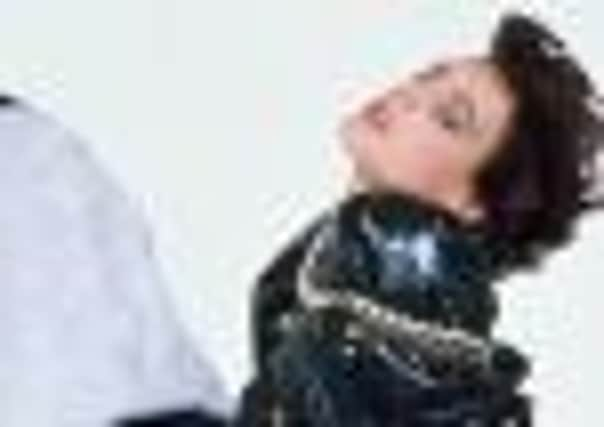Fashion book reviews: The style counsellors


IS FASHION ART? Edinburgh fashionistas who attended a glamorous evening in Scotland’s stunningly refurbished National Portrait Gallery days before the grand reopening would certainly answer in the affirmative, after watching coltish models strut their stuff in McQueen and Prada, while dramatically teetering on Christian Louboutin heels with sinful-scarlet soles.
Art has never been so fashionable, as the author of last year’s terrific biography Coco Chanel: The Legend and the Life (HarperCollins, £14.99), Justine Picardie, noted on Radio Four. “And,” she continued, “fashion has never seen itself with quite such seriousness.”
Advertisement
Hide AdPore over the latest pile of style books and discover the truth of Picardie’s statement, hence fashion shows and design exhibitions in art galleries and weighty books, such as Fashion Designers at the Opera (Thames & Hudson, £35), about the links between high culture and haute couture. Helena Matheopoulos’s gorgeously illustrated book includes sketches, photographs of finished costumes and production images, as well as behind-the-scenes dramas.
“You can sing with designs on stage,” proclaimed the late Gianni Versace. He was evidently right, for in 2009 and 2010 alone Tom Ford, Christian Lacroix, Miuccia Prada, Emanuel Ungaro and Viktor & Rolf designed costumes for high-profile opera productions around the world, while Lagerfeld and Zandra Rhodes have also played the frock opera. Otavia and Rita Missoni – designers-turned-Edinburgh-hoteliers – even invented new Scottish tartans for Lucia di Lammermoor at La Scala, Milan, in 1983, a production awash with tam o’shanters, lilac kilts and sporrans the size of dinner plates.
Matheopoulos interviewed designers, directors and divas in an attempt to discover the appeal of the art form for couturiers as disparate as Giorgio Armani, who thinks that “less is more”, and Versace who thought that “less is a snore”. Viktor Horsting, of design duo Viktor & Rolf, who created costumes for Robert Wilson’s 2009 production of Der Freischütz, says: “Fashion is all about creating dreams and opera is the ultimate dream.”
Of course, art also gives artisans clout. One designer who has intellectual clout to spare is Yohji Yamamoto, the visionary Japanese designer whose influential designs were showcased at London’s Royal Academy and the Barbican, before the Victoria & Albert Museum staged this spring’s celebration of his 30-year career – which included a site-specific show at Wapping Hydraulic Power Station, for which the famous 1998 crinoline wedding dress was suspended over water like an art installation, as well as a photographic exhibition of Yohji’s Women at the Wapping Project Bankside Galleries.
In Yohji Yamamoto (V&A Publishing, £35), the book accompanying the retrospective, Yamamoto’s genius as designer and craftsman is distilled, his astonishing ability to turn fabric into fluid sculptures, using muted colours, especially black, while, in the words of as Yamamoto’s creative director, former fashion editor Irène Silvagni, “allowing the body to float inside, protected, with air between the body and the fabric”.
“I think to fit clothes tight on a woman’s body is for the amusement of man,” Yamamoto tells essayist Yuniya Kawmura. “It doesn’t look noble.” Yamamoto’s entry in Marnie Fogg’s indispensable The Fashion Design Directory (Thames & Hudson, £18.95) speaks of his artistry and “post-modern eloquence of form, clothing androgynous humanity in Zen-like confections intended as expressions of quality, beauty and asymetrical balance”. Fogg’s authoritative Directory, which will surely become an essential work of reference, examines 150 fashion brands, including Dior, Westwood, and Victoria Beckham, as well as Edinburgh-born Holly Fulton and Glaswegian Christopher Kane, Versace’s creative consultant since 2009 – Scots who are fashioning the world.
Advertisement
Hide AdThere are at least six new books out about the “elusive” Chanel, ranging from the sensational – Sleeping With the Enemy: Coco Chanel, Nazi Agent by Hal Vaughan (Chatto & Windus, £20) -– to the sublime, Jérôme Gautier’s, Chanel: The Vocabulary of Style (Thames & Hudson, £65).
Whether or not Chanel was a “horizontal collaborator”, she never loses her allure for publishers. Gautier’s investigation is glorious, with photogaphs by Beaton, Avedon and Man Ray, as well as a divine portrait of Cate Blanchett by Karl Lagerfeld, who has directed the company with “holy opportunism” since 1983. You need arms as toned as Michelle’s Obama’s to pick up this 304-page volume, but place it on a coffee table, put on your little black dress – originally created by Mademoiselle – and thrill to the chicest of all fashion plates.
Advertisement
Hide AdOf course your LBD may not bear a designer label. Perhaps it came from a department store, possibly Jenners, in Edinburgh, one of many grand shopping emporia featured in The Department Store: History. Design. Display, by Jan Whitaker (Thames & Hudson, £36). Lavishly illustrated, Whitaker’s informative book relates the history of Harrods, Barneys and Galeries Lafayette among other commercial pleasure palaces which became social headquarters, “to the housewife what his clubhouse is to the businessman,” according to one architect. In 1895, Whitaker writes, the fancy goods department in Jenners had tables “overflowing with merchandise and Japanese screens and baskets were heaped on the floor”. It would no longer pass muster in the 20th century, she concludes.
If The Department Store tells of the invention of shopping, then The Art of Being a Well-Dressed Wife (V&A Publishing, £9.99) advises: “Shop in a shopping mood.” First published in the US in 1959 and written by American fashion designer Anne Fogarty, it is a pink, cloth-bound guide to “the fine art of being a well-dressed wife with notes for the patient husband who pays the bills”. It positively reeks of the period charm of the Mad Men era.